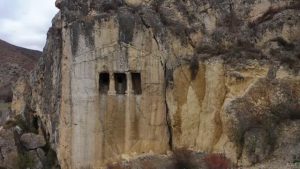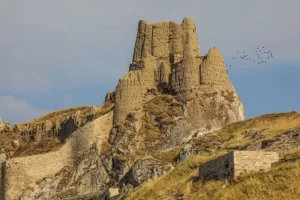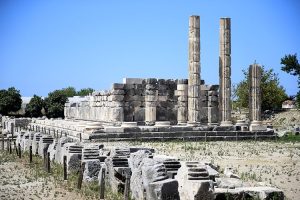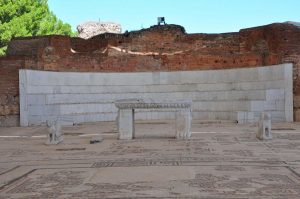
After 43 Years of Searching, the Long-Lost Zeus Temple Emerges at Limyra
Archaeologists working at Limyra in Türkiye’s Antalya province have finally located the long-missing Temple of Zeus — a sanctuary known from epigraphic sources since 1982 but never identified on the ground. The discovery, made in cooperation with the Austrian Archaeological Institute, is poised to reshape long-held interpretations of the ancient city’s sacred topography.
A Lycian Capital With an Unresolved Mystery
Nestled at the foot of Mount Toçak, Limyra served as one of eastern Lycia’s key political centers, particularly during the reign of Lycian King Perikle. The city is well known for its dense clusters of rock-cut tombs, the monumental Perikle Heroon, a 6,000-seat theater, Roman baths, the Ptolemaion, and a striking funerary monument dedicated to Gaius Caesar.
Limyra was added to Türkiye’s Heritage for the Future program in 2023, and this year marked the first season under the coordination of Assoc. Prof. Kudret Sezgin, who redirected the team toward one of the site’s most persistent archaeological questions.
A Sanctuary Lost — and Found
Excavations in the western sector revealed architectural remains that finally matched the long-referenced but unlocated temple. The team uncovered the building’s eastern façade, including its main entrance and the ante walls framing the approach.
The façade stretches roughly 15 meters wide, and evidence shows that a Byzantine fortification wall was later constructed directly on top of the ancient sanctuary. The temple’s cella — the sacred inner chamber — now lies beneath a privately owned orange grove. Once expropriation procedures are completed, excavations will continue into this sealed area.
📣 Our WhatsApp channel is now LIVE! Stay up-to-date with the latest news and updates, just click here to follow us on WhatsApp and never miss a thing!!

According to Sezgin, the identification of the temple forces a reassessment of Limyra’s urban development, revealing a much more structured sacred zone than previously assumed.
Ceramics Push Limyra’s Timeline Back 5,000 Years
Pottery recovered from the sanctuary area indicates that settlement at Limyra extends back to 3000 BCE, far earlier than classical-period narratives once suggested. This shifts the site’s chronology into a deeper prehistoric framework and expands its significance in regional settlement history.
Rewriting the City’s Sacred Landscape

The rediscovered location helps clarify the function of previously excavated features. A monumental propylon beneath the Roman Street — earlier thought to serve a civic role — now appears to have been the classical-period gateway into the Zeus sanctuary.
Similarly, the so-called “Hellenistic fortification wall” can now be reinterpreted as part of the temple’s perimeter enclosure.
“For decades we knew the temple existed but not where it stood,” Sezgin noted. “The new evidence allows us to reconstruct the sacred precinct with far greater precision.”
Cover Photo: An aerial view of the western sector of Limyra, where the newly identified Zeus Temple lies partly buried beneath a modern orange grove. A Byzantine fortification wall runs directly over the temple’s eastern façade. Credit: AA
You may also like
- A 1700-year-old statue of Pan unearthed during the excavations at Polyeuktos in İstanbul
- The granary was found in the ancient city of Sebaste, founded by the first Roman emperor Augustus
- Donalar Kale Kapı Rock Tomb or Donalar Rock Tomb
- Theater emerges as works continue in ancient city of Perinthos
- Urartian King Argishti’s bronze shield revealed the name of an unknown country
- The religious center of Lycia, the ancient city of Letoon
- Who were the Luwians?
- A new study brings a fresh perspective on the Anatolian origin of the Indo-European languages
- Perhaps the oldest thermal treatment center in the world, which has been in continuous use for 2000 years -Basilica Therma Roman Bath or King’s Daughter-
- The largest synagogue of the ancient world, located in the ancient city of Sardis, is being restored











Leave a Reply